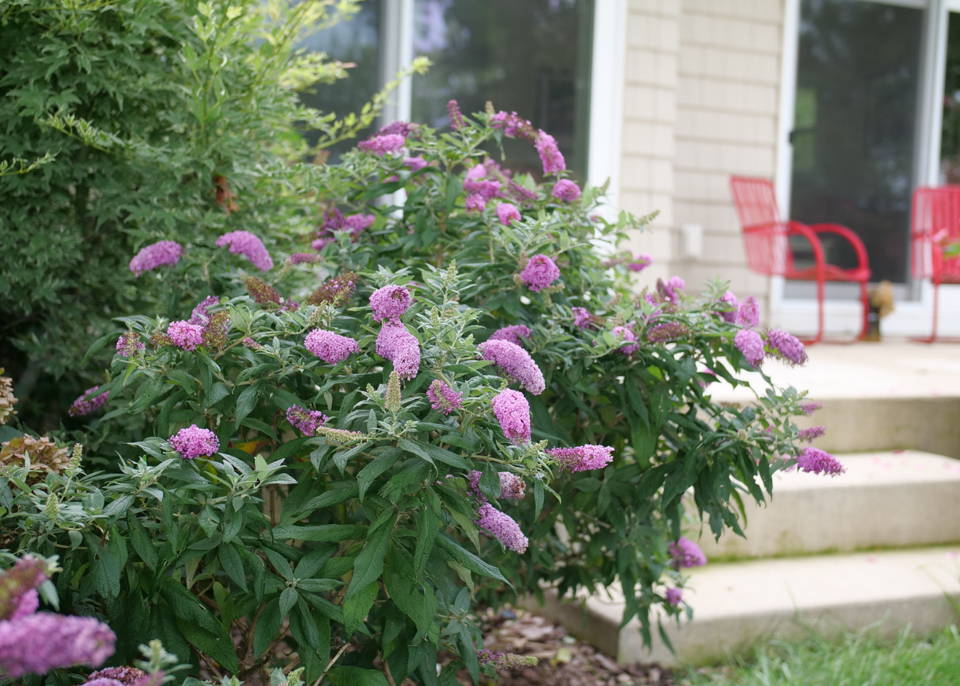Pollinators are very important to our world. They help plants grow and produce fruits and seeds. Bees, butterflies, and birds are some pollinators. They carry pollen from one flower to another. This helps plants make new seeds.
One easy way to help pollinators is to plant pollinator shrubs. These shrubs give food and shelter to pollinators. They have flowers that attract bees and butterflies. When you plant these shrubs, you help nature and your garden.
What Are Pollinator Shrubs?
Pollinator shrubs are small to medium plants. They have many flowers that pollinators like. These shrubs bloom for a long time. That means pollinators get food for many weeks. Some shrubs also provide berries or seeds for birds.
These shrubs are good for gardens. They make the place look nice. They also help the environment. Pollinator shrubs can grow in many places. Even small spaces can have them.

Credit: www.epicgardening.com
Why Plant Pollinator Shrubs?
- Help Pollinators: Bees and butterflies need food. Shrubs give them nectar and pollen.
- Better Gardens: Pollinators help flowers and fruits grow well.
- Nature Support: Shrubs give homes for small animals and insects.
- Easy to Grow: Many shrubs need little care once they start growing.
- Beautiful Flowers: They add color and life to your garden.

Credit: www.countryliving.com
Best Pollinator Shrubs to Plant
Here are some common pollinator shrubs you can plant. They work well in many gardens.
| Shrub Name | Flower Color | Pollinators Attracted | Special Notes |
|---|---|---|---|
| Butterfly Bush (Buddleja) | Purple, Pink, White | Butterflies, Bees | Fast growing, blooms all summer |
| Blueberry Bush (Vaccinium) | White to Pink | Bees, Birds | Produces edible berries |
| Serviceberry (Amelanchier) | White | Bees, Birds | Early spring flowers and berries |
| Ninebark (Physocarpus) | White or Pink | Bees, Butterflies | Hardy and drought tolerant |
| Spirea | Pink, White | Bees, Butterflies | Easy to grow, blooms in late spring |
How to Plant Pollinator Shrubs
Planting pollinator shrubs is simple. Follow these easy steps:
- Pick the Right Spot: Choose a place with good sunlight. Most shrubs like full sun or partial shade.
- Prepare the Soil: Loosen the soil. Remove weeds and stones. Add compost if the soil is poor.
- Dig a Hole: Make a hole twice as wide as the plant’s root ball. The hole should be deep enough for the roots.
- Place the Shrub: Put the shrub in the hole. Make sure it sits at the same soil level as before.
- Fill the Hole: Cover the roots with soil. Press the soil gently to remove air pockets.
- Water Well: Give the shrub plenty of water after planting. This helps roots settle in.
- Mulch Around: Add a layer of mulch around the shrub. Mulch keeps soil moist and stops weeds.
Care Tips for Pollinator Shrubs
After planting, shrubs need some care. Here are easy tips:
- Water Regularly: Water young shrubs often. When established, water during dry times.
- Prune Shrubs: Cut old or dead branches. This helps new growth and flowers.
- Watch for Pests: Check leaves for bugs. Use natural ways to control pests.
- Add More Plants: Plant different shrubs and flowers for more pollinators.
- Avoid Chemicals: Do not use strong pesticides. They can harm pollinators.
Best Time to Plant Pollinator Shrubs
The best time depends on your climate. But here are some general tips:
- Spring: When the ground thaws and before shrubs bloom.
- Fall: After the heat is gone but before frost. Helps roots grow well.
Planting in these seasons gives shrubs the best chance to grow strong.
How Pollinator Shrubs Help the Environment
Pollinator shrubs do more than just look nice. They help nature in many ways:
- Support Wildlife: Provide food and homes for many animals.
- Increase Biodiversity: More plants and animals in one place.
- Improve Air Quality: Plants clean the air and give oxygen.
- Prevent Soil Erosion: Roots hold soil and stop it from washing away.
- Help Pollinators Thrive: Keep bee and butterfly numbers up.
Adding Pollinator Shrubs to Your Garden
If you want a garden full of life, start with pollinator shrubs. They bring color and movement. Bees and butterflies will visit often. Birds might come too for berries.
You can plant shrubs along fences, near patios, or in flower beds. Mixing shrubs with other flowers creates a healthy garden. Pollinators will find food all season long.
Summary
Planting pollinator shrubs is a simple way to help nature. These shrubs feed bees, butterflies, and birds. They make your garden beautiful and lively. Choose the right shrubs for your area. Plant them in good soil and sunny spots. Care for them with water and pruning. Avoid chemicals that harm pollinators. Your garden will be a safe place for many creatures.
Try planting pollinator shrubs this season. Watch your garden bloom with life and color. It is good for the earth and for you.
Frequently Asked Questions
What Are Pollinator Shrubs?
Pollinator shrubs attract bees, butterflies, and other pollinators. They support biodiversity and garden health.
Which Shrubs Are Best For Pollinators?
Butterfly bush, lavender, and hydrangea are excellent choices. They offer nectar and pollen.
How Do Pollinator Shrubs Benefit My Garden?
They increase pollination, boost plant growth, and enhance fruit production. They also attract beneficial insects.
When Should I Plant Pollinator Shrubs?
Early spring or fall is ideal. This allows shrubs to establish roots before extreme weather.
5 min read

